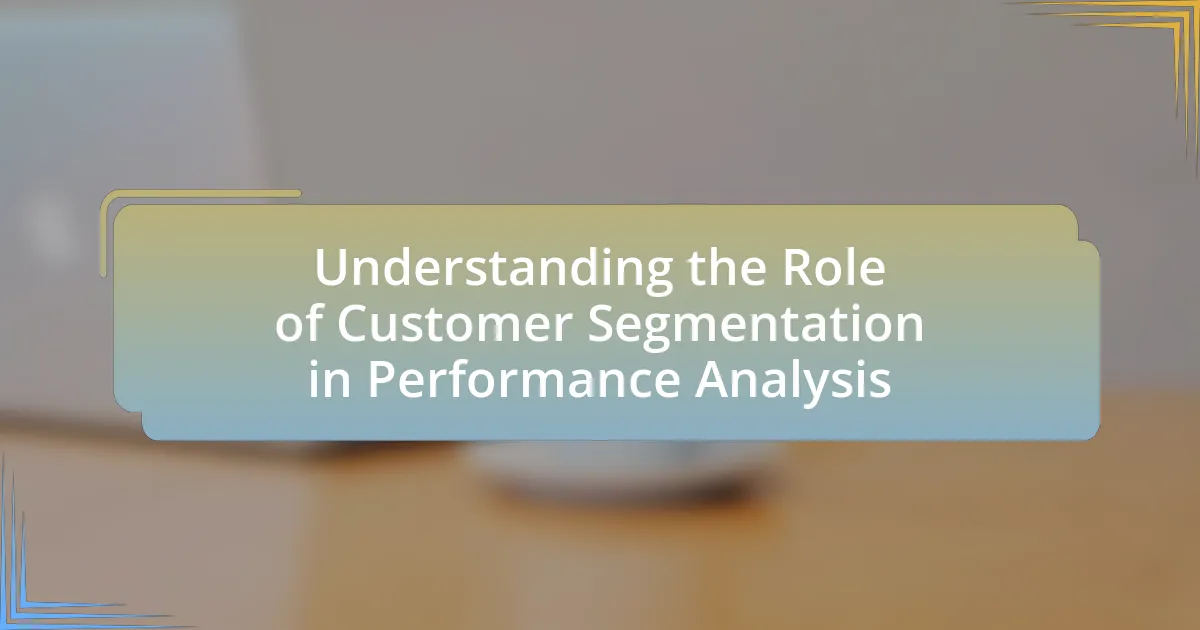Tracking Return on Investment (ROI) for online advertising campaigns is a critical process that measures the profitability of advertising efforts by comparing generated revenue to incurred costs. This article outlines the importance of ROI in evaluating marketing effectiveness, influencing budget decisions, and measuring campaign success. Key components of ROI, including revenue, costs, and conversion rates, are discussed alongside metrics for calculation and the role of data analytics in enhancing tracking accuracy. Additionally, the article addresses challenges businesses face in ROI tracking, common pitfalls to avoid, and strategies for maximizing ROI through targeted approaches and continuous monitoring. Future trends in technology, such as AI and automation, are also explored, highlighting their impact on improving ROI analysis and overall advertising effectiveness.
![]()
What is Tracking Return on Investment (ROI) for Online Advertising Campaigns?
Tracking Return on Investment (ROI) for online advertising campaigns involves measuring the profitability of advertising efforts by comparing the revenue generated to the costs incurred. This metric is crucial for assessing the effectiveness of marketing strategies, as it quantifies the financial return relative to the investment made. For instance, if a campaign costs $1,000 and generates $5,000 in revenue, the ROI would be calculated as (Revenue – Cost) / Cost, resulting in an ROI of 400%. This calculation helps businesses make informed decisions about future advertising investments and optimize their marketing strategies based on performance data.
Why is ROI important for online advertising campaigns?
ROI is important for online advertising campaigns because it measures the effectiveness and profitability of marketing investments. By calculating ROI, businesses can determine which campaigns yield the highest returns, allowing for informed budget allocation and strategy adjustments. For instance, a study by HubSpot found that companies that track ROI are 1.6 times more likely to achieve their marketing goals. This data underscores the necessity of ROI in optimizing advertising efforts and maximizing financial outcomes.
How does ROI influence advertising budget decisions?
ROI directly influences advertising budget decisions by providing a measurable metric that indicates the effectiveness of advertising spend. When businesses analyze ROI, they assess the revenue generated relative to the costs incurred in advertising campaigns. A higher ROI suggests that the advertising budget is being utilized effectively, prompting companies to allocate more funds to successful campaigns. Conversely, a lower ROI may lead to budget cuts or reallocation of resources to more profitable strategies. For instance, a study by Nielsen found that companies that optimize their advertising budgets based on ROI can achieve up to 30% higher returns compared to those that do not. This data underscores the critical role of ROI in shaping advertising budget strategies.
What role does ROI play in measuring campaign success?
ROI, or Return on Investment, is a critical metric in measuring campaign success as it quantifies the financial return generated from marketing efforts relative to the costs incurred. By calculating ROI, businesses can assess the effectiveness of their advertising campaigns, enabling them to make informed decisions about budget allocation and strategy adjustments. For instance, a study by HubSpot found that companies with a clear ROI measurement strategy are 1.6 times more likely to achieve their marketing goals. This demonstrates that ROI not only provides a clear financial picture but also serves as a guiding metric for optimizing future campaigns.
What are the key components of ROI in online advertising?
The key components of ROI in online advertising are revenue generated, advertising costs, and conversion rates. Revenue generated refers to the total income attributed to the advertising campaign, while advertising costs encompass all expenses related to the campaign, including ad spend and associated fees. Conversion rates measure the percentage of users who take a desired action, such as making a purchase or signing up for a newsletter, after interacting with the ad. These components are essential for calculating ROI, which is determined by the formula: (Revenue – Costs) / Costs. For instance, a study by Nielsen found that effective online advertising can yield an ROI of up to 400%, highlighting the importance of these components in assessing campaign performance.
What metrics are used to calculate ROI?
The primary metrics used to calculate ROI include net profit, total investment cost, and revenue generated. Net profit is determined by subtracting total costs from total revenue, while total investment cost encompasses all expenses related to the advertising campaign. Revenue generated refers to the total income produced as a result of the campaign. The ROI formula is expressed as (Net Profit / Total Investment Cost) x 100, providing a percentage that reflects the efficiency of the investment. This method allows businesses to assess the financial return of their online advertising efforts accurately.
How do costs and revenues factor into ROI calculations?
Costs and revenues are critical components in calculating Return on Investment (ROI), as ROI is defined as the ratio of net profit to the total investment cost. Specifically, the formula for ROI is (Revenue – Costs) / Costs. This means that higher revenues increase the numerator, leading to a higher ROI, while increased costs reduce the net profit, thereby lowering the ROI. For example, if an online advertising campaign generates $10,000 in revenue and incurs $5,000 in costs, the ROI would be (10,000 – 5,000) / 5,000, resulting in an ROI of 1, or 100%. This illustrates how both costs and revenues directly influence the effectiveness and profitability of advertising investments.
How can businesses effectively track ROI for their online advertising campaigns?
Businesses can effectively track ROI for their online advertising campaigns by implementing a structured approach that includes setting clear objectives, utilizing tracking tools, and analyzing data. First, defining specific goals such as increased sales or lead generation allows businesses to measure success against these targets. Next, employing tracking tools like Google Analytics or Facebook Ads Manager enables businesses to monitor key performance indicators (KPIs) such as conversion rates and customer acquisition costs. Finally, analyzing the collected data helps businesses calculate ROI using the formula: (Net Profit / Cost of Investment) x 100. For instance, a study by HubSpot found that companies that actively measure their ROI are 1.6 times more likely to achieve their marketing goals, demonstrating the importance of effective tracking methods.
What tools and software are available for tracking ROI?
Tools and software available for tracking ROI include Google Analytics, HubSpot, and Adobe Analytics. Google Analytics provides detailed insights into website traffic and conversion rates, allowing businesses to measure the effectiveness of their online advertising campaigns. HubSpot offers comprehensive marketing analytics that track customer interactions and ROI across various channels. Adobe Analytics delivers advanced data analysis capabilities, enabling organizations to assess the performance of their marketing efforts and optimize spending. These tools are widely recognized for their ability to provide actionable data that supports informed decision-making in online advertising.
How can data analytics enhance ROI tracking?
Data analytics enhances ROI tracking by providing precise measurement and insights into campaign performance. By analyzing data from various sources, businesses can identify which advertising strategies yield the highest returns, allowing for informed decision-making. For instance, a study by Google found that companies using data analytics for marketing saw a 15-20% increase in ROI due to better targeting and optimization of ad spend. This capability to track and analyze customer interactions in real-time enables marketers to adjust campaigns dynamically, ensuring resources are allocated to the most effective channels.
![]()
What challenges do businesses face when tracking ROI for online advertising?
Businesses face several challenges when tracking ROI for online advertising, primarily due to difficulties in accurately attributing conversions to specific campaigns. One major issue is the fragmentation of data across multiple platforms, which complicates the aggregation of performance metrics. Additionally, the lack of standardized measurement tools can lead to inconsistencies in data interpretation. A study by HubSpot found that 40% of marketers struggle with measuring ROI due to these attribution challenges. Furthermore, the evolving nature of consumer behavior and the use of ad blockers can obscure the effectiveness of campaigns, making it harder for businesses to assess their true return on investment.
What common pitfalls should businesses avoid?
Businesses should avoid the common pitfall of neglecting to set clear, measurable goals for their online advertising campaigns. Without specific objectives, it becomes challenging to assess the effectiveness of the campaigns and calculate the return on investment (ROI). Research indicates that companies with defined goals are 376% more likely to report successful outcomes in their marketing efforts. Additionally, businesses should refrain from failing to track and analyze data consistently, as this can lead to missed opportunities for optimization and improvement. According to a study by HubSpot, 70% of marketers who track their ROI regularly are more likely to achieve their marketing goals. Lastly, businesses must avoid underestimating the importance of audience targeting; ineffective targeting can result in wasted ad spend and low engagement rates.
How can inaccurate data affect ROI calculations?
Inaccurate data can significantly distort ROI calculations by leading to erroneous assessments of campaign performance. When data is flawed, it can misrepresent both the costs incurred and the revenue generated, resulting in misleading ROI figures. For instance, if advertising expenses are underreported or sales attributed to a campaign are overstated, the calculated ROI will appear more favorable than it actually is. A study by the Digital Marketing Institute found that 70% of marketers believe inaccurate data negatively impacts their ability to measure ROI effectively, highlighting the critical importance of data integrity in financial assessments.
What are the implications of not tracking ROI effectively?
Not tracking ROI effectively can lead to significant financial losses and misguided business decisions. Without accurate ROI measurement, organizations cannot determine the profitability of their online advertising campaigns, resulting in continued investment in ineffective strategies. A study by HubSpot found that 70% of marketers say that measuring ROI is their top challenge, indicating that failure to track ROI can lead to wasted resources and missed opportunities for optimization. Additionally, without clear ROI data, businesses may struggle to allocate budgets efficiently, potentially diverting funds from high-performing campaigns to underperforming ones, ultimately hindering overall growth and competitiveness in the market.
How can businesses overcome these challenges?
Businesses can overcome challenges in tracking Return on Investment (ROI) for online advertising campaigns by implementing advanced analytics tools and establishing clear performance metrics. Utilizing tools like Google Analytics or specialized marketing software allows businesses to gather precise data on customer interactions and conversions. Establishing key performance indicators (KPIs) such as cost per acquisition, conversion rates, and customer lifetime value enables businesses to measure the effectiveness of their campaigns accurately. According to a study by HubSpot, companies that actively track their ROI are 1.5 times more likely to achieve their marketing goals, demonstrating the importance of effective tracking methods.
What best practices can improve ROI tracking accuracy?
To improve ROI tracking accuracy, implement consistent data collection methods across all advertising channels. This ensures that metrics such as conversion rates, customer acquisition costs, and revenue generated are uniformly tracked, allowing for reliable comparisons. For instance, using a centralized analytics platform can help aggregate data from various sources, reducing discrepancies and enhancing accuracy. Additionally, regularly auditing tracking codes and ensuring they are correctly implemented on all relevant pages can prevent data loss or misattribution. According to a study by Google Analytics, businesses that maintain consistent tracking practices see up to a 30% increase in the accuracy of their ROI calculations.
How can continuous monitoring enhance ROI outcomes?
Continuous monitoring enhances ROI outcomes by providing real-time insights into campaign performance, allowing for immediate adjustments to optimize spending. This proactive approach enables marketers to identify underperforming ads or channels quickly, reallocating resources to higher-performing areas, which can lead to a significant increase in overall returns. For instance, a study by Google found that businesses that utilized continuous monitoring and optimization strategies saw an average ROI increase of 20-30% compared to those that did not. This data underscores the effectiveness of continuous monitoring in maximizing the financial impact of online advertising campaigns.
![]()
What are the future trends in tracking ROI for online advertising campaigns?
Future trends in tracking ROI for online advertising campaigns include the increased use of artificial intelligence and machine learning for data analysis, enhanced cross-channel attribution models, and the integration of blockchain technology for transparency. AI and machine learning enable advertisers to analyze vast amounts of data in real-time, improving decision-making and campaign optimization. Enhanced cross-channel attribution models allow for a more accurate understanding of customer journeys across multiple platforms, leading to better allocation of advertising budgets. Additionally, blockchain technology offers a secure and transparent way to track ad spend and performance, reducing fraud and increasing trust in the data. These trends are supported by industry reports indicating that companies leveraging AI in marketing see a 20% increase in ROI, while those adopting blockchain technology report improved accountability in ad transactions.
How is technology shaping the future of ROI tracking?
Technology is shaping the future of ROI tracking by enabling real-time data analysis and automation, which enhances accuracy and efficiency in measuring advertising effectiveness. Advanced analytics tools, such as machine learning algorithms, allow marketers to process vast amounts of data quickly, identifying patterns and trends that inform decision-making. For instance, a study by McKinsey & Company found that companies leveraging advanced analytics can improve their marketing ROI by 15-20%. Additionally, the integration of artificial intelligence in tracking systems facilitates predictive modeling, allowing businesses to forecast future performance based on historical data. This technological evolution not only streamlines the tracking process but also provides deeper insights into customer behavior, ultimately leading to more informed investment strategies in online advertising campaigns.
What role does artificial intelligence play in ROI analysis?
Artificial intelligence enhances ROI analysis by enabling more accurate data processing and predictive analytics. AI algorithms can analyze vast amounts of data from online advertising campaigns, identifying patterns and trends that human analysts might overlook. For instance, a study by McKinsey found that companies using AI for marketing analytics can improve their ROI by up to 30%. This capability allows businesses to optimize their advertising strategies in real-time, ensuring that resources are allocated to the most effective channels and tactics, ultimately leading to higher returns on investment.
How can automation improve the efficiency of ROI tracking?
Automation can significantly enhance the efficiency of ROI tracking by streamlining data collection and analysis processes. Automated systems can gather real-time data from various advertising platforms, eliminating manual entry errors and reducing the time spent on data aggregation. For instance, tools like Google Analytics and marketing automation software can automatically track user interactions and conversions, providing accurate insights into campaign performance. This real-time data allows marketers to make informed decisions quickly, optimizing campaigns based on performance metrics. According to a study by HubSpot, companies that automate their marketing efforts see a 14.5% increase in sales productivity and a 12.2% reduction in marketing overhead, demonstrating the tangible benefits of automation in tracking ROI.
What strategies can businesses adopt to maximize ROI in online advertising?
Businesses can maximize ROI in online advertising by implementing targeted audience segmentation, optimizing ad placements, and utilizing data analytics for continuous improvement. Targeted audience segmentation allows businesses to tailor their messaging to specific demographics, increasing engagement and conversion rates. For instance, a study by Facebook found that targeted ads can lead to a 50% increase in conversion rates compared to non-targeted ads. Optimizing ad placements involves selecting the right platforms and formats that resonate with the target audience, which can significantly enhance visibility and effectiveness. Additionally, utilizing data analytics enables businesses to track performance metrics, identify successful strategies, and adjust campaigns in real-time, leading to improved ROI. According to a report by Google, businesses that leverage data analytics in their advertising strategies see an average ROI increase of 30%.
How can A/B testing contribute to better ROI?
A/B testing can significantly enhance ROI by allowing businesses to identify the most effective marketing strategies through data-driven decision-making. By comparing two versions of a campaign, companies can determine which variant yields higher conversion rates, leading to more efficient allocation of advertising budgets. For instance, a study by Optimizely found that A/B testing can increase conversion rates by up to 49%, demonstrating its potential to directly impact revenue. This empirical evidence supports the assertion that A/B testing not only optimizes marketing efforts but also maximizes return on investment by focusing resources on the most successful tactics.
What are the benefits of optimizing ad spend based on ROI insights?
Optimizing ad spend based on ROI insights leads to increased profitability and more efficient resource allocation. By analyzing ROI, businesses can identify which advertising channels yield the highest returns, allowing them to focus their budgets on the most effective strategies. For instance, a study by Nielsen found that companies that optimize their ad spend based on performance data can achieve up to a 30% increase in ROI. This data-driven approach minimizes wasteful spending and enhances overall campaign effectiveness, ensuring that marketing budgets are utilized in a manner that maximizes revenue generation.
What practical tips can help businesses improve their ROI tracking?
To improve ROI tracking, businesses should implement a structured approach that includes setting clear objectives, utilizing analytics tools, and regularly reviewing performance metrics. Clear objectives allow businesses to define what success looks like, while analytics tools like Google Analytics or specialized ROI tracking software provide data on campaign performance. Regularly reviewing performance metrics ensures that businesses can adjust strategies in real-time, optimizing their advertising spend. According to a study by HubSpot, companies that actively track their ROI are 12 times more likely to see a positive return on their marketing investments, highlighting the importance of effective tracking methods.




